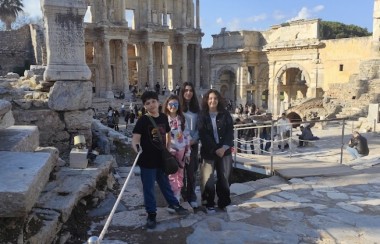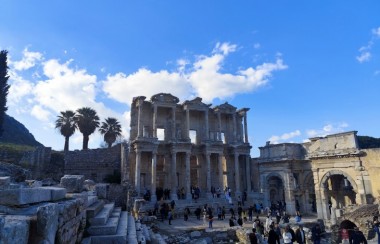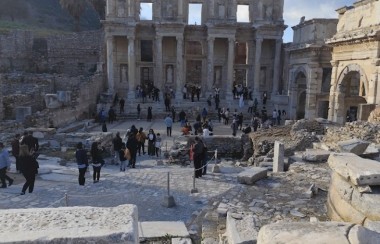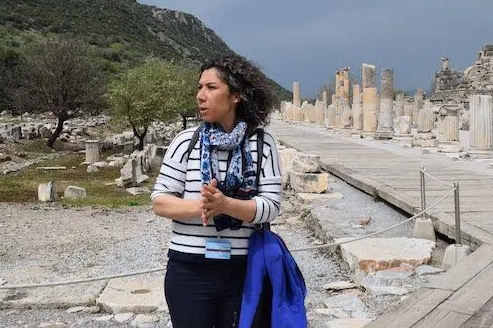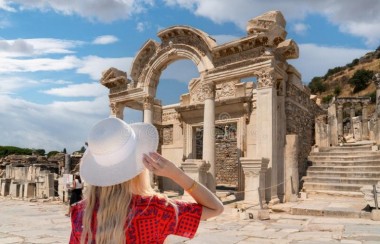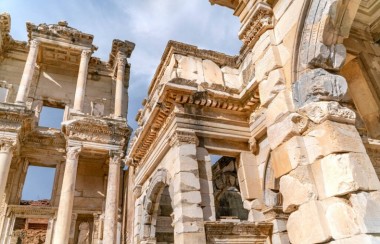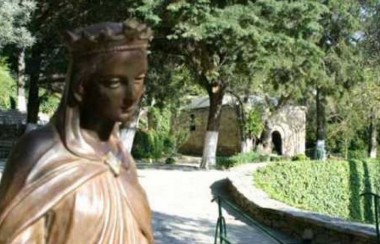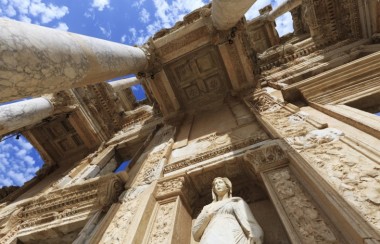The Library of Celsus: A Marvel of Ancient Ephesus
The Library of Celsus in Ephesus stands as one of the most breathtaking examples of Roman architecture and a testament to the grandeur of ancient civilization. This iconic structure, built in the 2nd century AD, remains a major attraction for history enthusiasts and travelers alike.
A Monument to Knowledge and Legacy
Commissioned by Tiberius Julius Aquila in honor of his father, Tiberius Julius Celsus Polemaeanus, the library was not merely a place of learning but also served as a mausoleum. Unlike other libraries of antiquity, such as the great Library of Alexandria, this one was built as a tribute to a single individual. Celsus was a Roman senator and governor of Asia, and his tomb was uniquely placed within the library—a rare honor at the time.
Architectural Grandeur
The Library of Celsus was designed in a grand Roman style, featuring a two-story facade adorned with ornate columns, intricate carvings, and statues representing wisdom, knowledge, intelligence, and virtue. Though appearing to have two levels, the interior cleverly included a single-story hall with wooden shelves and scroll niches to store an estimated 12,000 scrolls.
The design of the library also highlights the advanced engineering skills of Roman builders. The structure had a double-walled system to regulate humidity and protect delicate manuscripts—an innovative feature for its time.
Destruction and Rediscovery
Like many ancient sites, the Library of Celsus suffered from natural disasters and wars. It was severely damaged in a 3rd-century earthquake, and later, the Goths sacked Ephesus in 262 AD, further reducing the library to ruins. Over the centuries, its remnants were buried under layers of history until modern excavations in the 20th century led to its partial restoration, allowing us to witness its former splendor today.
A Must-Visit Destination
Today, the Library of Celsus remains one of the most famous landmarks in Turkey, drawing visitors to Ephesus for its historical significance and architectural beauty. Standing before its grand facade transports one back in time, offering a glimpse into the intellectual and cultural richness of the Roman Empire.
Whether you're a historian, an archaeologist, or simply an admirer of ancient wonders, the Library of Celsus is a must-visit destination that continues to inspire awe and appreciation for human ingenuity.
Have you visited the Library of Celsus? Share your experience in the comments!
Related Shore Excursions
Explore Ephesus History with our Shore Excursions .
Discover Majestic Ephesus
Majestic Ephesus takes you on an unforgettable journey through history; etched on minds as the...
Ancient City Of Ephesus, House Of Virgin Mary, Basilica Of St. Jhon
Ephesus played an important role in the spread of Christianity. Ephesus is&...
The Best Of Ephesus And The House Of Virgin Mary
Ephesus played an important role in the spread of Christianity. Ephesus is&...
Ancient Ephesus & Turkish Bath (Hamam)
Ephesus; the most important commercial and trade center of the ancient world.
Ultimate Ephesus
Terrace Houses: Admire the frescoed walls, mosaic flooring and peristyle courtyards of homes where E...

